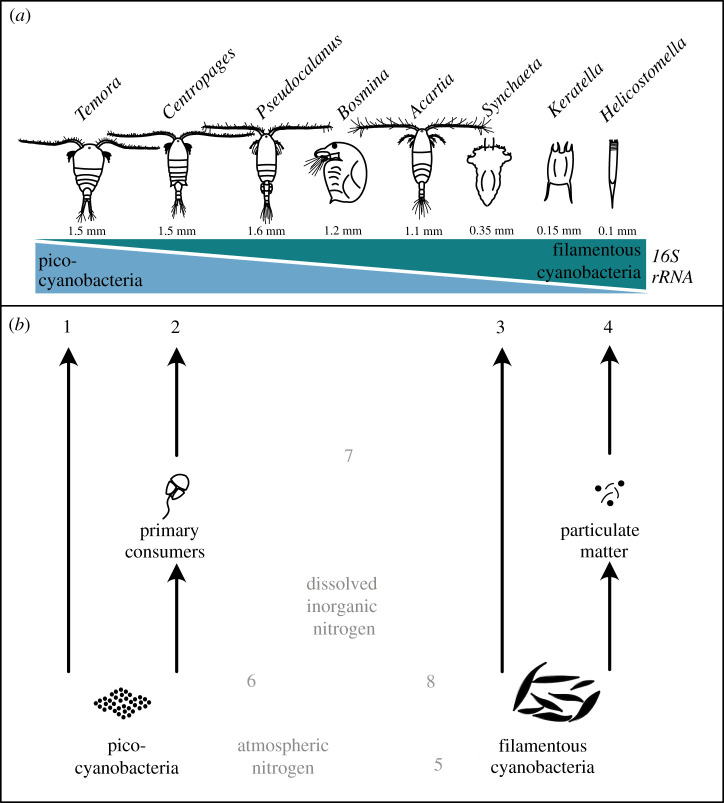Figure 4.
Illustration of dominant zooplankton consumers and alternative energy transfer pathways in the pelagic food web. (a) Size range of selected zooplankton species aligned with the relative read abundance of associated pico- and filamentous cyanobacteria. (b) Black arrows illustrate alternative pathways of energy transfer from primary producers to zooplankton consumers. Ingestion of picocyanobacteria can be directly (1) or via primary consumers (2). Filamentous cyanobacteria can be ingested alive (3) or in the state of decay (4). Shaded arrows denote putative pathways of nitrogen fixed by filamentous cyanobacteria (5) that may enter the food web either via consumption (3, 4) but may also stimulate the production of picocyanobacteria (6). Grazers of filamentous cyanobacteria may enhance the release of dissolved inorganic nitrogen (7), in contrast with previously suggested passive leaking (8). (Online version in colour.)

